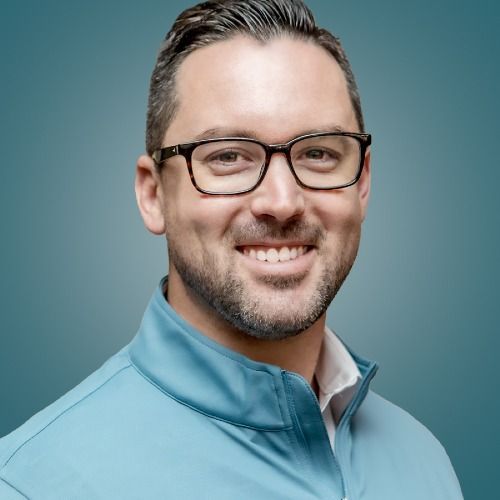19 part 1: Delivering e-Com Packages Smarter to Alaska, Hawaii, and Puerto Rico
In Part 1 of this 2-part series, our hosts sit down with Chas Gorham, Vice President, Sales of International Bridge and Tom Foley, Vice President, Government Affairs & Client Retention of Asendia USA, LIVE from Parcel Forum '25. The discussion explores how International Bridge delivers cost-effective, reliable shipping solutions to underserved regions like Alaska, Hawaii, and Puerto Rico—offering air service at ground rates.
Learn how this partnership improves consistency, reduces costs compared to traditional carriers, and taps into the overlooked e-commerce potential of these markets, including Alaska’s $2.1 billion spend.
Learn more about this topic:
Chas Gorham | LinkedIn
Chas Gorham is the Vice President of Sales at International Bridge, where he leads strategic business development and customer acquisition initiatives across the company’s global logistics network. With a deep background in e-commerce, international parcel delivery, and supply chain optimization, Chas plays a pivotal role in helping retailers and logistics partners expand their cross-border reach through innovative and cost-effective shipping solutions.
Over his career, Chas has earned a reputation for building strong, collaborative partnerships that drive measurable growth and operational excellence. His leadership combines analytical insight with a customer-first approach, aligning International Bridge’s capabilities with the evolving needs of online retailers, marketplace sellers, and fulfillment providers.
In his role, Chas oversees enterprise sales strategy, market expansion efforts, and the development of tailored logistics programs that simplify international delivery for U.S.-based merchants. His ability to translate complex logistics challenges into practical, results-driven solutions has made him a trusted advisor to some of the most recognizable brands in global e-commerce.
Tom Foley | LinkedIn
Tom Foley is the Vice President, Government Affairs & Client Retention for Asendia USA. Tom spent 28 years with the US Postal Service where he spent most of that time involved with international business and the last 9 years at Postal Headquarters in Washington DC. Tom managed many different functions including International Sales, Global Product Management, and international Wholesale account management. Tom started his postal career as a letter carrier in his hometown on Long Island NY.
Immediately after retirement, Tom joined Globegistics (now part of Asendia USA) where he managed all postal and government relations, contracts, and postal export compliance. Tom has a similar role with Asendia USA but has recently expanded to now include managing the relationships with our wholesale accounts.
Tom is a US Coast Guard veteran and a graduate of Stockton University. He also attended Robert Morris University in Pittsburgh, studying international business.
Tom is considered one of the leading experts in international postal procedures and regulations. He is very active in Postal and Government organizations. He is the Chairman of the International Mailers Advisory Group (IMAG) for the past 5 years and is also on the Board of Directors for the Parcel Shippers Association. Tom also regularly attends State Department open meetings as well as the Mailers Technical Advisory Committee meetings.
Out of the office, Tom enjoys spending his time with his wife and three children, all of whom are either out of college or just starting college. Tom plays golf, swims, and is an avid sports fan.
Transcript
And what we like to say, it's an air service at ground rates. So realistically now, if you use a different carrier, you're either paying way too much money or you're getting a slow service.
Voiceover:This is Outside the Box with Asendia USA, a podcast educating US based brands, marketplaces and e tailers on international shipping topics and how they can expand their global e-commerce footprint.
Nick Agnetti:Hey everybody, welcome back to Outside the Box with Asendia USA podcast. I am one of your co hosts, Nick Agnetti with my other co host Jason Rowland.
Jason Rowland: ing to you guys live from the: Nick Agnetti:Lovely Schaumburg, nice western suburb. Okay. And we have a special guest for this, two special guests.
We've got Chas Gorham from International Bridge and we've got Tom Foley from Asendia USA.
Tom Foley:Yes, I am.
Nick Agnetti:Maybe if we could talk. And again, our purpose of our podcast is educating listeners, viewers on Cross-Border e-Commerce as International Bridge as a partner.
It's not necessarily cross border, but sometimes people think of Puerto Rico as being cross border or international.
But could you maybe just give listeners, viewers a little overview of what International Bridge does, some of its kind of its value proposition and how it helps people in the marketplace?
Chas Gorham:Absolutely.
So International Bridge, you know, we consider ourselves a regional carrier, but we really don't compete with other regional carriers because of where we go.
We service under serviced areas like Alaska, Hawaii and Puerto Rico where there's not really a lot of other options like there is in the lower 48 or cross border to really go to. Okay, so we've been doing this for about 20 years, right?
Nick Agnetti:Oh, wow.
Chas Gorham:Yeah, we've been doing it a long time and we found out early on that these were areas that people wanted options, but there wasn't a lot. And not just shippers, but the people ordering online on e-commerce. So what we do here is we sort freight in the US Every day.
We fly it to Alaska, Hawaii and Puerto Rico to our facilities and then deliver to every zip code in those areas. So we give a full service for Alaska, Hawaii, Puerto Rico, where there's really not a lot of other options for people, people to utilize.
And what we like to say, it's an air service at ground rates. So realistically now if you use a different carrier, you're either paying way too much money or you're getting a slow service.
Nick Agnetti:Talk, talk to. Let's dive into that. I mean, you know, you talk about other carriers. So this is an area that I Don't know a ton about. Right. So.
So my focus usually is I'm focused on as an example of Canada, eu, Australia, uk, those types of things. But when you talk about other carriers, you know, what are they, what are some of the experiences people experience?
Why would they then turn to an international bridge outside? I know you gave us some value prop, but like to tell, kind of give us some of those, those, those variances.
Chas Gorham:Absolutely. So you know you've got your, your major national carriers, right? We know who those are.
Tom Foley:Yeah.
Chas Gorham:You know, UPS, FedEx, USPS. Right.
And those are the guys that typically, you know, if you're shipping to those lanes and you use one of them, you just kind of give it by default. So it's like, oh, big time. It's only 1 to 2% of our volume.
We just give it and people kind of forget about it and don't look at it until someone comes up and maybe one of the bean counters in finance and says, why are we paying so much for that two pound package? Oh well, it's going to Puerto Rico. Right, right. You know, and they're like, well that's not sustainable.
We just, we do what we do because you know, our customer ordered it from there. Okay. And so what we found out with us going to Hawaii, Alaska, Puerto Rico and using our own operation, we were able to keep rates down.
Being able to fly every day to Alaska, Hawaii, Puerto Rico. Right. Not a lot of people are flying there every day, so the air rates are pretty good.
And then utilizing our own operation there to control that whole end to end. So you have IB facilities in Alaska, Hawaii, Puerto Rico.
Nick Agnetti:It's awesome.
Chas Gorham:And so when it gets there, that's our facilities and we sort it.
Nick Agnetti:Yeah, Tom, get after it.
Tom Foley:Go ahead. Yeah. So I want to just introduce also the. Been using International bridge Asendia has for quite a long time.
And it started actually before we at the logistics at Asendia merged together. It was even prior to that where brokers and Asendia used International Bridge specifically out of Philadelphia.
The Philadelphia facility we have, we actually build the air cans for them. We do all the legwork. We have a very large client that we're doing this for.
So for many years our sales team has come up to me many times and said why can't we expand this? Why can't we?
We're hearing the same thing that Chaz just mentioned where we have a lot of clients that are saying wait a minute, I got all this continental stuff and we can. And so we. So I said absolutely we can do it.
So it took a little while for us to expand it, but we partnered up with International Bridge and we've expanded this now to all of our facilities for the most part. And it's really starting to take off.
But at answering the question of why, you know, why do we have to give it directly to the USPS when we could probably pass on better transits for sure. Love that. And even better rates. So that's kind of how it started our relationship and how it grew from there.
Nick Agnetti:So, okay, I'm kind of nerding out a little bit because I don't often think too much about Hawaii, Puerto Rico and Alaska. Right. So, so what if I'm a shopper, one of those areas?
What are three, what are a few things that maybe I, I think about when it comes to, oh, I gotta, I gotta order something, how long is it gonna take to get to me? Maybe. Are there like misconceptions? Are there, you know, just.
Chas Gorham:Yeah, I think, I think if how we look at it, and we've been doing it 20 years, right? It's a very loyal shopping, meaning that they buy from brands that they know. It doesn't necessarily have to be the fastest.
Tom Foley:Right.
Chas Gorham:But the consistency and they know, hey, if I order from this brand, I know I'm going to get it in three to five days, you know, another brand that might use another carrier, one shipment they get in four days, one shipment again in 15 days, you know, so the consistency that we offer, because we are flying it to our own facilities, you know, the brands that use us and partners that use us know that their shoppers are very loyal. And if you think about this, so Alaska, Hawaii, Puerto Rico?
A lot of those areas, if you kind of go out into the further remote areas, they can't just go to Walmart, you know, and go buy whatever they need. So the percentage typically is a little higher than someone living in New York or New Jersey that buys online.
And the other thing that we've seen, they're typically buying more than one item, right? Because sure, you know, say, hey, I.
Nick Agnetti:Might not order again for another, you know, exact eight weeks or whatever it is.
Chas Gorham:Or, and, and what people don't realize, you know, it's another 5 million customers in those three areas that they're not really marketing. And one crazy stat, Alaska. So that's the smallest out of the field, Right. Puerto Rico's really blown up.
Nick Agnetti:Alaska is the smallest out of the.
Chas Gorham:Three in terms of population.
Nick Agnetti:Yeah, sorry folks, I had no idea. So, yeah, that's okay.
Tom Foley:Though. Yeah.
Chas Gorham:So it's the largest in geographical land, but the lowest in population. But last year in Alaska, Alaskans spent $2.1 billion on e-commerce purchases. 2.1 billion billion the B.
So you know, a lot of people, whether it's shippers, whether it's carriers, they overlook these areas a lot, but they don't realize what type of volume is there, the potential. Yeah.
Jason Rowland:So I've been to the airport in Anchorage and worked with some of the carriers there. Like specifically UPS that has a massive facility at the airport.
Tom Foley:Yeah.
Jason Rowland:And the amount of aircraft and the uplift that they put into that country. But if you're able to do it at a rate that they can't do it based on, you know, that's, it's, it's gotta be saving shippers a ton of money.
The overhead that UPS has in order to get things to Alaska.
Tom Foley:I spent, I spent a lot of time up in Alaska when I was in the Coast Guard years ago. Thank you for service time and. No problem.
And what was, what I, what I was amazing was that how many little tiny islands all around on the Aleutian chain and up up in the Bering Sea that are actually inhabited by people and they need to get their mail and packages more so than like you said, nobody can go to Walmart. There is no Walmart in Adak, Alaska, you know, so it's all mail order now.
And just to tap onto Chaz's point too, one of the biggest differences, a lot of our customer base right now is potentially using the USPS directly for Alaska, Hawaii, Puerto Rico. But a lot of this stuff, especially from Puerto Rico, if it depending upon the weight of the package is going by surface. A barge from the U.S. yeah.
Chas Gorham:How long does that.
Tom Foley:One of the biggest things that I loved about International Bridge.
Nick Agnetti:How often does that happen?
Tom Foley:Twice a week I believe.
Chas Gorham:So if you miss this is what happens with the consistency. If they miss the barge, it sits for another three days.
So you could see, like I said, maybe a four day delivery or maybe a 14 day delivery or even more.
Nick Agnetti:Hey, did you guys all hear and listen to that right there? So that's a really important piece to know.
Chas Gorham:Right.
Tom Foley:That's one of the reasons why we offered this service because the price, even though the price is even a little bit better than what they can get directly with usps, it's all about the.
Chas Gorham:Transistence, the customer experience.
Tom Foley:That's what it's all about. So that's why it's working very, very well for us at Asendia.
Jason Rowland:Thank you for listening.
Jason Rowland:Tune in again next week when we continue this discussion.
Voiceover:Share, subscribe and download our podcast.
To learn more about today's topic or for a free consultation, email at ecommerce.usa@asendia.com. Come back for more insightful discussions on e-commerce, shipping to Canada, Mexico and worldwide.



